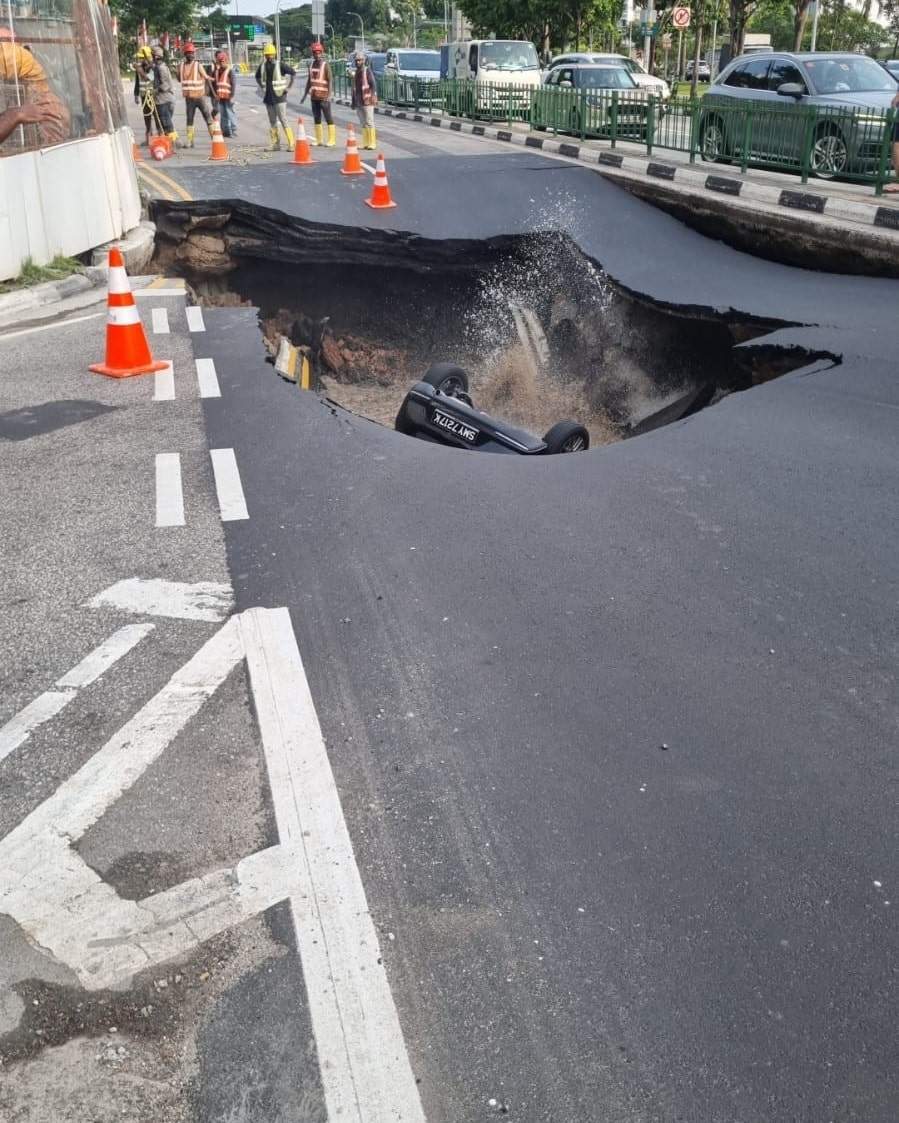Singapore sinkhole rescue sparks calls for migrant worker safety reforms
Their heroic rescue has reignited debate over the controversial issue of labourers being transported in the backs of lorries

The migrant workers who rescued a woman trapped in a sinkhole on a Singapore road over the weekend have drawn widespread praise, but their actions have also reignited debate over the conditions these labourers face, especially the contentious issue of transporting them in the backs of lorries.
The rare incident occurred on Saturday evening along Tanjong Katong Road South, when a black Mazda was swallowed sideways into a three-metre (10-foot) deep cavity filled with murky water. Video footage circulating on social media showed workers sprinting to the scene and pulling the female driver to safety using a rope.
One of the men involved, construction foreman Pitchai Udaiyappan Subbiah, was seen directing efforts from the roadside. Rather than jumping in, which he said would have left them unable to climb out, Subbiah instructed others to toss a nylon rope into the hole, then helped them hoist the woman up. After the rescue, he lent her his phone to call her daughter.
By Monday, authorities had filled in the hole and were compacting the ground further, according to local lawmaker Goh Pei Ming. Additional safety tests would be conducted before the road could be reopened, he said.
Dipa Swaminathan, founder of migrant worker charity ItsRainingRaincoats, noted this was the second recent case of foreign workers stepping in as first responders to save lives in Singapore. In April, a group of migrant labourers helped evacuate children from the second floor of a shophouse in River Valley after a fire broke out.
“This is just the second incident in recent months, but there have been countless over the years. If they see a crisis developing in front of them, they will never ever look the other way or walk the other way, they will come in to help,” she told This Week in Asia.
“They give their entire working life to Singapore; many of them stay here for decades, like in this case. We need to keep that in mind as well when we calibrate how we treat them, whether in terms of transport or food or living conditions,” added Swaminathan. Subbiah told reporters over the weekend that he has worked in Singapore for 22 years.
Singapore’s long-standing practice of transporting labourers in the open cargo decks of lorries has once again come under scrutiny following Saturday’s incident.
Support group Make Workers Possible posted on Instagram: “There is something poignantly poetic about the fact that migrant workers, likely transported on the backs of lorries, went out of their way to save a Singaporean in her car.”
Public sentiment echoed that view. One Instagram user commented under a video interview with Subbiah: “It’s time we reward them with proper transport and not just [on the] back of the lorry. They save our lives while we endanger theirs. How can we do that?”
Under Singapore’s Road Traffic Act, carrying passengers in a lorry’s cargo deck is generally prohibited, but there is a longstanding exemption for employers transporting workers. This has sparked concern among rights advocates, who argue it places labourers at unnecessary risk.
As of December, there were 456,800 work permit holders in Singapore’s construction, marine shipyard and process sectors, according to the Ministry of Manpower.
Unhandled type: inline-plus-widget {“type”:”inline-plus-widget”}
The Singapore government has pushed back against calls for an outright ban on transporting migrant workers in lorry cargo decks, arguing that such a move would be unworkable for many businesses.

In a parliamentary reply in February, former senior minister of state for transport Amy Khor said the suggestion, while “well-intentioned”, would create severe operational challenges, particularly for firms that needed to move both workers and equipment to multiple sites daily. A ban, she warned, could lead to project delays, higher costs and job losses. Many businesses “could be forced to shut down, causing workers, both local and foreign, to lose their jobs”, she added.
Instead, authorities had adopted what she described as a “multipronged” approach to improving safety. This includes encouraging firms to switch to buses where possible, promoting co-location of dormitories near worksites, and implementing safety regulations such as mandatory rain covers, driver rest rules and protective features on lorries.
Khor said the government continued to work closely with industry associations and NGOs to educate workers and improve standards. “We want to improve the safety of our workers and all road users,” she told parliament, “but we want to do so in a practical and effective manner”.
Official statistics show there has been one death from lorry accidents as of May this year, compared with five deaths in 2024 and one in 2023.